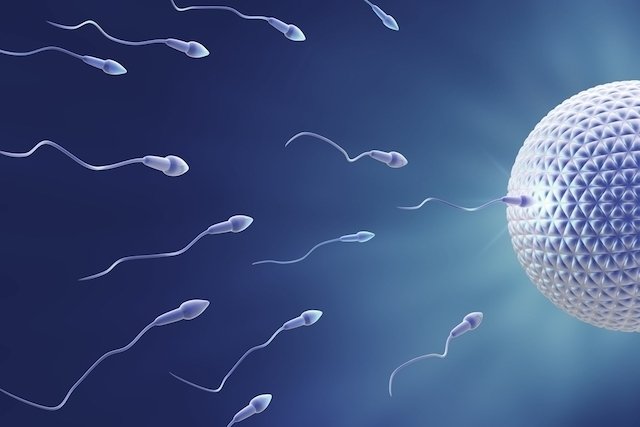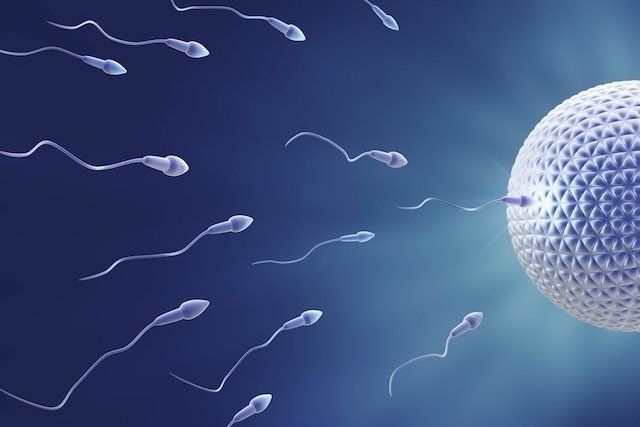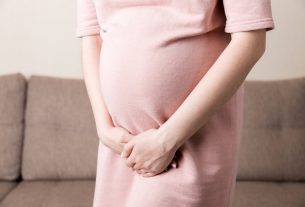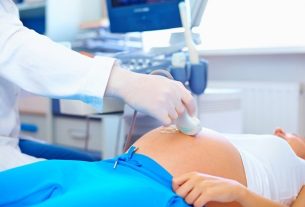Fertilization is the moment in which the sperm manages to penetrate the egg, which happens during the woman’s fertile period. After fertilization of the egg, the zygote is formed, which will develop and form the embryo and, later, the fetus.
Fertilization occurs in the fallopian tubes, also called uterine tubes, and the egg or zygote begins to divide as it moves until it reaches the uterus. Upon reaching the uterus, it is implanted in the uterine wall, a process known as implantation, which takes place approximately 6 to 7 days after fertilization.

How fertilization happens
For fertilization to be possible, the woman must be in her fertile period, because it is during this period that an egg is released from the ovaries. Enter your details into the calculator below to find out when your next ovulation is:
The egg released by the ovary travels through the uterine tubes, where it remains viable for up to 24 hours. The egg emits chemical signals capable of attracting sperm with the aim of fertilization. Thus, when attracted to the egg, the sperm passes through the outer layer of the egg and makes it impermeable, preventing other sperm from also reaching and fertilizing the egg.
Then, the fusion of the plasma membranes of the egg and sperm occurs, resulting in the release of the genetic material from the sperm, decondensation and dispersion of the chromatin so that the zygote can be formed. Along the uterine tube, the process of cell differentiation takes place, so that the blastocyst reaches the uterus, which is implanted, a process called implantation, starting pregnancy. See how to know if implantation has occurred.
How to know if fertilization occurred
The signs and symptoms of fertilization are very subtle and, most of the time, are not noticed by the woman. However, in some cases, the woman may feel mild cramping and a small amount of pink bleeding, in which case this is also indicative of implantation, that is, that the fertilized egg has been implanted in the wall of the uterus, starting embryonic development. .
In most cases, the woman only notices pregnancy symptoms two weeks after implantation. See more details on how to know if fertilization has occurred.
Bibliography
- MAIA, George D. Human Embryology. São Paulo: Atheneu, 2008. 44; 48; 54.
- CLEVELAND CLINIC. Pregnancy: Ovulation, Conception & Getting Pregnant. 2019. Disponível em: <https://my.clevelandclinic.org/health/articles/11585-pregnancy-ovulation-conception–getting-pregnant>. Acesso em 03 dez 2019
- BRAZILIAN FEDERATION OF GYNECOLOGY AND OBSTETRICS ASSOCIATIONS. Prenatal Care Manual. 2014. Available at: <https://www.febrasgo.org.br/images/arquivos/manuais/Manuais_Novos/Manual_Pre_natal_25SET.pdf>. Accessed on 03 Dec 2019
- AMERICAN PREGNANCY ASSOCIATION. Pregnancy Symptoms – Early Signs of Pregnancy. 2019. Disponível em: <https://americanpregnancy.org/getting-pregnant/early-pregnancy-symptoms/>. Acesso em 03 dez 2019
- NATIONAL HEALTH SERVICE. Signs and symptoms of pregnancy. 2017. Disponível em: <https://www.nhs.uk/conditions/pregnancy-and-baby/signs-and-symptoms-pregnancy/>. Acesso em 03 dez 2019

Sign up for our newsletter and stay up to date with exclusive news
that can transform your routine!
Warning: Undefined array key "title" in /home/storelat/public_html/wp-content/plugins/link-whisper-premium/templates/frontend/related-posts.php on line 12
Warning: Undefined array key "title_tag" in /home/storelat/public_html/wp-content/plugins/link-whisper-premium/templates/frontend/related-posts.php on line 13





